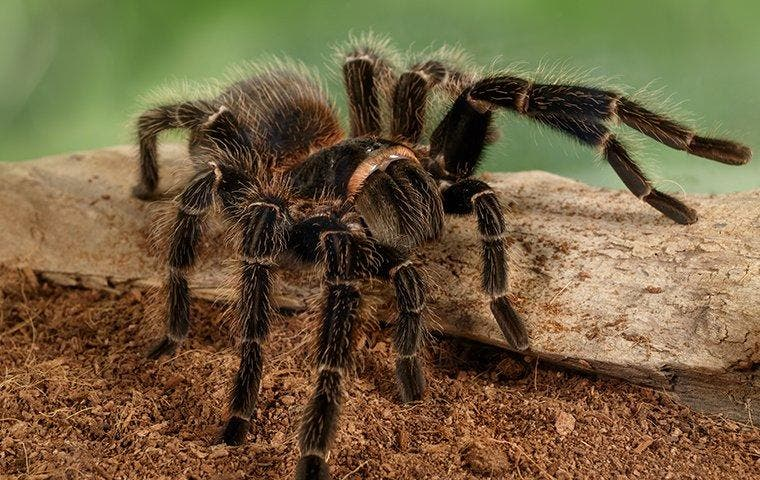TARANTULA

Copyright infringement not intended
Picture Courtesy: www.greenhomepest.com
Context: Researchers are expressing concerns about the potential threats of the Nilgiri large burrowing spider, particularly related to habitat loss, climate change, and the illegal wildlife trade.
About Nilgiri large burrowing Spider
- The Nilgiri large burrowing spider is a relatively large tarantula with a leg span of up to 15 cm. This size classifies it as one of the larger tarantula species.
- They typically has a brown to black colouration, with a robust, hairy body and legs.
- Endemic to the Nilgiri Mountains in the Western Ghats of India, this spider is highly specialized to its local environment.
- They are primarily nocturnal, meaning it is most active during the night. During the day, it takes refuge in a burrow it digs in the ground, which can be quite deep. At night, it emerges to hunt for prey, which includes insects, other spiders, and even small vertebrates.
- They are considered relatively rare and faces several threats to its survival. Its habitat is under constant pressure from factors such as habitat loss due to deforestation and human development, as well as the effects of climate change.
- They play a crucial role in its ecosystem by helping to control populations of insects and other invertebrates through predation. It also serves as a food source for various animals like snakes, birds, and small mammals, contributing to the local food web.
- They are oviparous, meaning it lays eggs. After laying eggs, the female guards the eggs in her burrow until they hatch. The spider undergoes multiple moults as it grows and can have a relatively long lifespan of up to 10 years.
- They are venomous; its bite is not typically life-threatening to humans. However, a bite can be quite painful and may lead to symptoms such as swelling and redness. Medical attention should be sought if bitten, especially if there is an allergic reaction or if the bite becomes infected.
Key Facts about Tarantulas
|
Habitat |
●Tarantulas can be found in a variety of habitats, including tropical rainforests, deserts, grasslands, and forests. They are especially diverse in the Americas, but they can also be found in other regions. |
|
Size |
●Tarantulas vary in size, but they are generally larger than most other types of spiders. Adult tarantulas can range from a few inches to over 10 inches in leg span, depending on the species. |
|
Appearance |
●Tarantulas are often recognized by their hairy bodies and legs. The hair on their bodies serves various purposes, including sensory functions and protection. These hairs can come in various colours and patterns. |
|
Behaviour |
●Tarantulas are primarily nocturnal predators. They use their strong jaws and venomous fangs (chelicerae) to subdue and consume prey, which can include insects, small vertebrates, and other arthropods. |
|
Lifestyle |
●Tarantulas can be both terrestrial (ground-dwelling) and arboreal (tree-dwelling), depending on the species. Some species live in burrows, while others may create silk-lined retreats in trees or other elevated locations. ●The lifespan of tarantulas varies among species but can range from several years to several decades. Some tarantulas have relatively long lifespans, and they may go through multiple moulting stages as they grow. |
|
Venom |
●While tarantulas are venomous, their venom is usually not considered dangerous to humans. Bites from most tarantula species are generally no worse than a bee or wasp sting, causing localized pain and discomfort. |
Conclusion
- The Nilgiri large burrowing spider is a little-known and potentially threatened species of tarantula endemic to the Western Ghats in India. Conservation efforts are needed to protect its habitat and address the risks posed by habitat loss, climate change, and the illegal wildlife trade. Further research is essential to better understand this species and develop effective conservation strategies.
|
PRACTICE QUESTION Q. What is the significance of the Western Ghats in terms of biodiversity and its impact on the climate and ecosystems of the Indian subcontinent? |



.jpg)
1.png)
